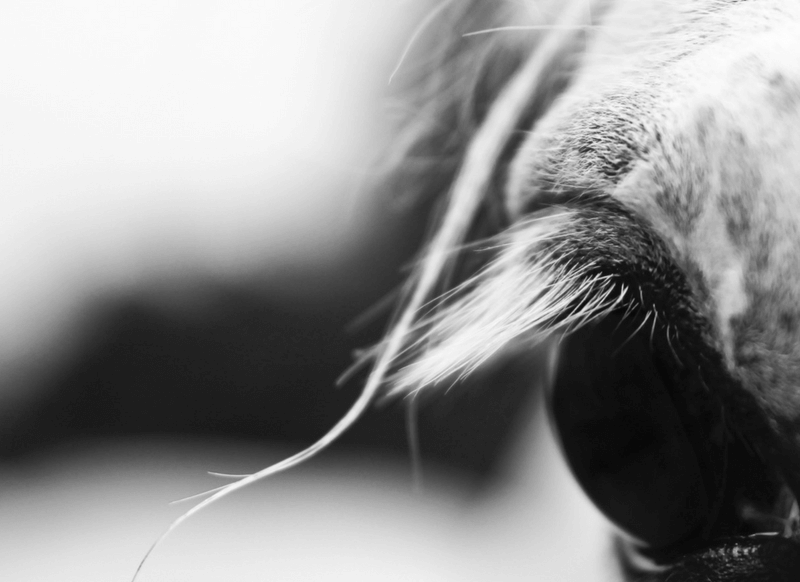
Understanding Corneal Ulcers in Horses
I love the eye of the horse. There is something quite special about it. Their eyes are not only windows to their souls but also indicators of their overall health. One eye condition that requires immediate attention is a corneal ulcer. Unfortunately there are many one eyed horses in the world due to late recognition and action.
In this article, we'll delve into horse corneal ulcers, exploring their causes, symptoms, and treatment options.
What are Corneal Ulcers?
Corneal ulcers are open sores or injuries on the surface of the horse's cornea, which is the clear outermost layer of the eye. They can occur due to various reasons, such as trauma, foreign objects, bacterial or fungal infections, or underlying eye conditions.
Identifying symptoms:
Detecting the presence of a corneal ulcer in your horse's eye is crucial for timely intervention.
Watch for the following signs:
- Squinting or excessive blinking
- Watery or tearing eyes
- Redness and inflammation
- Sensitivity to light
- Cloudiness or opacity in the eye
- Discharge or pus-like fluid
- Reluctance to open the eye or keep it open
Immediate Veterinary Attention:
If you suspect your horse has a corneal ulcer, it is essential to seek immediate veterinary attention. Prompt diagnosis and treatment can help prevent complications and ensure the best chance of recovery. Your veterinarian will conduct a thorough eye examination, which may include staining the cornea to visualize the ulcer more clearly.
Treatment Options:
Treatment for horse corneal ulcers depends on the severity and underlying cause. It may involve a combination of the following:
- Medications: Topical ointments or eye drops are often prescribed to combat infections, reduce inflammation, and promote healing. Antibiotics and antifungal medications may be used, depending on the specific case.
- Protective Measures: In some cases, your veterinarian may recommend the use of an eye patch or protective contact lens to shield the eye from further irritation and aid in healing.
- Follow-up Care: Regular follow-up appointments will be necessary to monitor progress and make adjustments to the treatment plan as needed.
Prevention Tips:
While not all corneal ulcers can be prevented, you can take certain precautions to minimize the risk:
- Maintain a clean environment: Keep the horse's living area free from debris, sharp objects, and potential eye irritants.
- Protective eyewear: Use fly masks or goggles when necessary, especially during outdoor activities or in environments where eye irritants are prevalent.
- Promptly address any eye injuries: Seek veterinary attention immediately if your horse sustains an eye injury to prevent the development of ulcers.
Conclusion:
Horse corneal ulcers are serious eye emergencies that require prompt veterinary care. By being vigilant and attentive to your horse's eye health, you can help prevent complications and ensure their well-being. Remember, a healthy and clear-eyed horse is a happy and thriving companion.
Note: This article is for informational purposes only and should not substitute professional veterinary advice. Always consult with a qualified veterinarian for accurate diagnosis and appropriate treatment options.
For more essential Horse First Aid and Horse Health Care
Join our safe and free Horse Wounds and Health Advice Facebook Group: https://www.facebook.com/groups/horsewounds
For more essential Horse First Aid and Horse Health Care register now for the Horse First Aid Program
